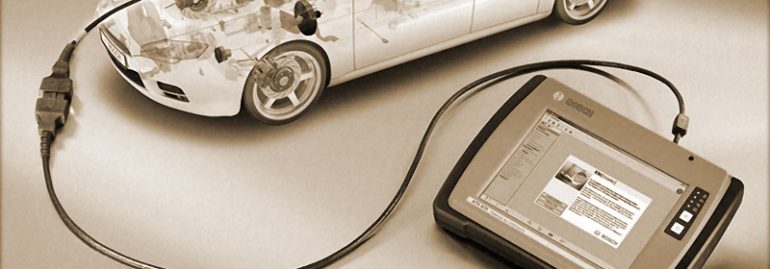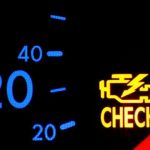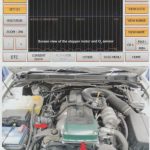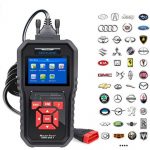If you are having trouble with your Ford vehicle, you will want to check its diagnostic trouble codes. You can find this information on your 16-pin data link connector underneath the steering column, which may also have a removable cover. You can purchase a scan tool from a reputable manufacturer, and follow their instructions carefully. Some scan tools offer additional features, such as a list of manufacturer-specific codes, so make sure to purchase the right one for your vehicle.
P0110 TP V PID suddenly changes below 0.49 volt or above 4.65 volt
If your vehicle has been showing signs of a trouble code, Ford P0110 TP V – PID suddenly changes below 0.49 volt, or above 4.65 volt, it’s time to take it to a mechanic. While the symptoms of this code are similar to those of other DTCs, the fixes may not be. Each vehicle is different, so it’s best to consult the factory repair manual or a database of car repair advice before undertaking a DIY fix.
This trouble code is usually caused by a problem with the vehicle’s VSS system. A malfunction of this system causes the VSS to send wrong data to the PCM. The PCM receives the vehicle’s speed data from the VSS, transfer case speed sensor, ABS control module, generic electronic module, or central timer module. The P0110 code can be displayed on your vehicle’s dashboard if you’re unsure of the root cause of this problem.
A high or low FRP PID indicates a hard fault in the fuel delivery system. You should also check for corroded, pinched, or shorted wiring. A low FRP PID value is also indicative of a fault with the fuel pressure regulator. When the FRP PID value is out of calibration, the test will fail.
Using an OBD-II scanner, check for codes and reset any faults. You can perform a road test to check the IAT sensor voltage, which should be at least 5 volts. If the reading is below this level, disconnect the wiring and reinstall it. If this fails to correct the issue, the only solution is to replace the IAT sensor.
If the problem persists, check the PCM for a bad ROM. It may be a bad PCM or the fuel pump’s PID. A bad ROM can be a sign of an open circuit or improper calibration. Ultimately, you need to check whether the ECU has failed. If the PCM continues to display P0110, you may need to replace the engine’s ECU.
P0111 Damage to the mass air flow sensor
The Ford P0111 trouble code can occur for several reasons. Damaged components or corroded connector pins are just a couple of the common causes. Replacing the air filter and cleaning the Mass Air Flow sensor may be enough to fix the code. You should also try driving the car to determine the cause. If these methods fail, you should visit your local Ford dealer. They will be able to provide you with a replacement or repair part.
The IAT sensor is an integral part of the Mass Air Flow (MAF) sensor. It detects the temperature of intake air and transmits a signal to the Powertrain Control Module (PCM). The P0111 DTC sets when the IAT sensor receives excessively high or low voltage. This sensor can cause an EVAP malfunction, which is a serious safety issue. Fortunately, the IAT sensor can be replaced by a technician.
When the IAT sensor is damaged, the car’s ECM may turn on the Check Engine Light (CEL). This means that the sensor has suffered a malfunction. If the temperature of the engine coolant has fallen below the recommended levels, the ECM will switch to failsafe mode, which will reduce fuel mileage and cause the engine to stall. In addition, the exhaust may blow black smoke. It’s critical to check the IAT sensor to avoid a malfunction.
Another cause of this code is a cracked intake rubber duct. This will cause the sensor to have a lower reading than the actual airflow. A cracked intake rubber duct can also cause a vacuum leak. If the air flow sensor does not function properly, the automatic transmission will shift out of place or the traction control system may not work at all. If you’re worried about this code, contact a qualified technician immediately.
P0611 Fuel level sensor circuit system malfunction
If you’re experiencing a no-start problem, P0611 could be the source of the problem. This malfunction can be caused by a circuit failure or a faulty sending unit. The ECM or PCM will notice a faulty sending unit by its voltage reading. If the reading is outside of the acceptable range, the PCM will store this code. However, if the sending unit is bad, the PCM won’t update the fuel level, and the fuel gauge will not accurately display the actual fuel level.
The most common cause of a P0611 code is a malfunctioning control module. While replacing the control module is the easiest solution, it’s important to understand that this isn’t the only problem. The most common symptom of a P0611 problem is drivability issues, so if you experience any of these symptoms, you should have your vehicle checked out. Hopefully, this will fix the issue.
A common mistake is starting a repair without thoroughly checking the wiring around the fuel level sensor. Sometimes, the sensor is fully functioning but the problem is with the wiring. Depending on the specific car model, you may have to replace the fuel pump, or the entire fuel system. Regardless of the cause, the repair will save you time and money. So, when you’re faced with a P0611 error code, don’t get too excited.
P0722 Transmission output shaft speed controller error
A Ford P0722 Transmission output shaft speed controller (OSS) error indicates that the sensor for the output shaft is not producing a valid signal. If the sensor is faulty, the powertrain control module (PCM) will set the code P0722. The warning light may not illuminate until multiple failure cycles have occurred. This error may also indicate a wiring or VSS fault, or a fuel shutoff solenoid or fuel pressure sensor problem.
The Ford P0722 transmission output shaft speed controller error code is an indication that the OSS has detected a discrepancy between the input and output speed of the transmission. Typically, the PCM will not detect an acceptable difference between the two speeds, so it cannot create a proper shifting strategy. The transmission may slip, resulting in an incorrect P0722 error code. The code may appear during a test drive or while the vehicle is at a steady speed in the same gear. To test if the transmission is not slipping, the code must be cleared with the faulty component replaced. A harness connector must be connected to the ECM or PCM. The positive lead of the multimeter should be connected to the power lead from the ECM. The negative wire should be connected to ground.
In some cases, this transmission output shaft speed controller error may indicate a failing output shaft speed sensor. The output shaft speed sensor is located inside the transmission and is responsible for providing a pulse signal to the Transmission Control Module (TCM). It is a component of the transmission control module and costs around $1000 to $1500. Typically, the problem is easily diagnosed and resolved by contacting a qualified mechanic.
If the output shaft speed sensor is not functioning properly, the PCM will set the P0722 transmission output shaft speed controller error code. A malfunctioning sensor will prevent the transmission from shifting gears. To identify the source of the problem, refer to the vehicle’s TSB and transmission manual. Once the TSB is identified, you can check the transmission and the associated wiring. If any of these components show visible defects, the fault may be the result of dirty engine wiring connectors.





